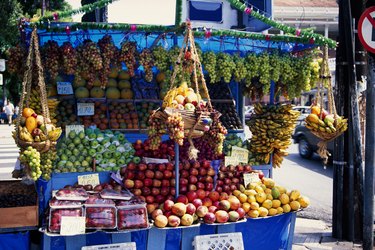
The pawpaw (Asimina triloba), also known as the "Indiana Banana," is a small fruit-bearing tree that grows wild in eastern North America, from Florida as far north as southern Canada. The plant contains various toxins, leading to confusion regarding whether or not pawpaws are edible. Under the proper circumstances, pawpaw fruits are not only edible, but highly nutritious. Pawpaws are hardy growing in U.S. Department of Agriculture plant hardiness zones 5 through 9.
Toxic Substances
Video of the Day
Research has confirmed that pawpaw twigs contain poisonous substances. Unripe fruits are almost as poisonous as the twigs, so you must be sure that your pawpaw fruits are fully ripe. Also, the seeds of the pawpaw fruit should not be eaten because they contain alkaloids that can cause vomiting.
Video of the Day
Medicinal Potential
At lower doses, these toxic substances may possess powerful medicinal properties. Compounds known as annonaceous acetogenins are found in the leaves and twigs of pawpaw trees. These compounds exhibit strong anti-cancer properties and may one day be commercially developed into anti-cancer drugs.
Nutrient Content
Despite the overall toxicity of the pawpaw tree, the ripe fruits are highly nutritious. In general, pawpaws are more nourishing than common fruits such as apples and grapes. It is no surprise, then, that early Spanish explorers found Native Americans along the Mississippi cultivating pawpaws, and the famous explorers Lewis and Clarke noted that pawpaws helped them to avoid starvation.
Flavor and Uses
The flavor of a fully ripe pawpaw is complex and unique -- described as a combination of banana, mango and pineapple. This highly perishable fruit can be eaten fresh or processed into products such as jam, pie, custard and wine. Pawpaws can be substituted for bananas in most recipes, and overripe pawpaws can be used in baked goods, just as overripe bananas are.